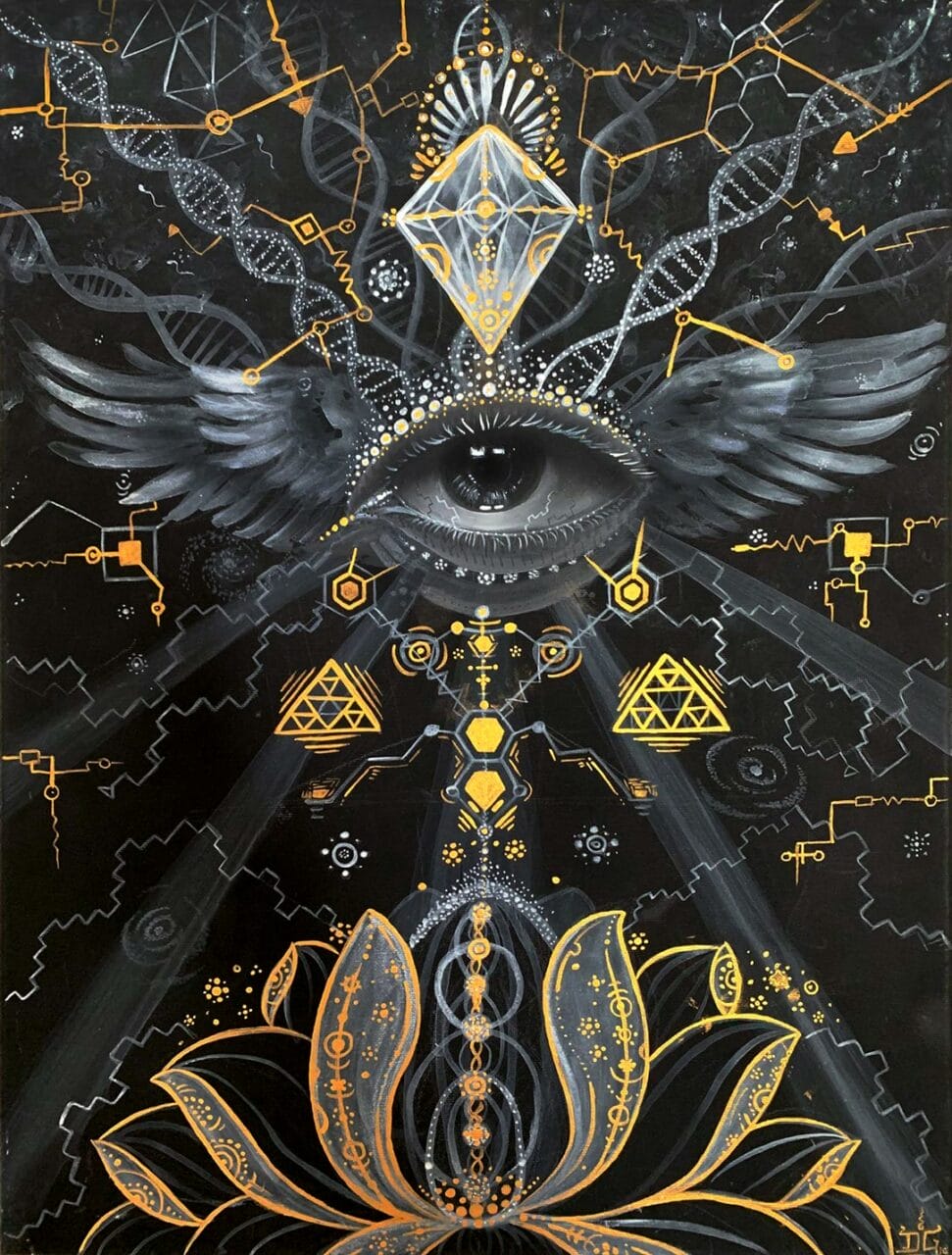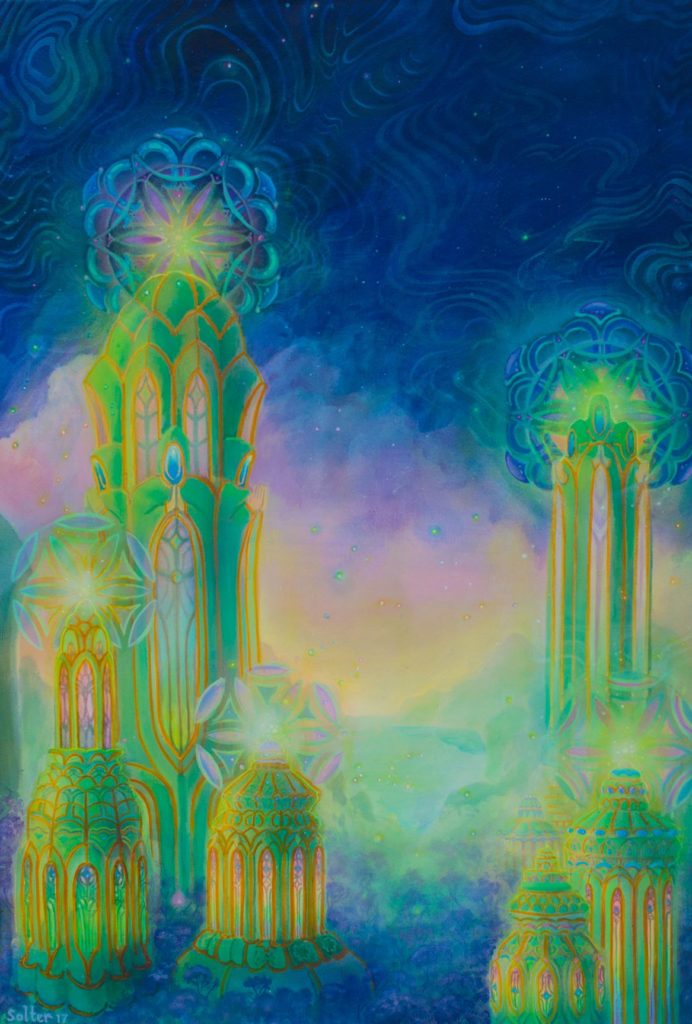
© Uni Kaya
The Historical Narrative of Shrooms
The presence of Shrooms can be traced back to 9000 BC, as indicated by historical documentation. These unique mushrooms, consisting of more than 200 species, are rich in psilocybin, a substance known for inducing hallucinogenic effects. Such effects may encompass altered consciousness, visual and auditory hallucinations, and deeply spiritual experiences. These mushrooms have been used in spiritual ceremonies, rituals, and traditions across various cultures and tribes for thousands of years. Many of these historical usages originate from North and South America.
Shrooms in the Ancient World
Over the course of history, many cultures have made use of natural psychedelics. Evidence from the Sahara Desert suggests that humans were consuming Psilocybe Cubensis over 7000 years ago. Archaeological findings reveal that this mind-altering substance has been represented in prehistoric art from diverse regions. For instance, indigenous tribes of North Africa in the Sahara incorporated its use in their paintings dating back to around 9000 BC. Similarly, the renowned Selva Pascuala mural rock painting in Spain, estimated to be about 6000 years old, implies the use of Psilocybe Hispanica in religious ceremonies. The influence of these substances on our cultural evolution, religion, art, societal norms, and everyday life is increasingly recognizable. This substance has unquestionably left a deep mark on our culture and society.
A Historical Overview of Magic Shrooms Use
Throughout history,magic Shrooms have been consumed for an extended period. The psychoactive substance we recognize today has endured through many centuries, with a wide range of practices related to its use. Who could resist the gifts of nature? It’s about time for Shrooms Near Me Canada to delve into the historical path that has led Shrooms to its current status.
Major Milestones
- Dried Shrooms have been utilized in traditional rituals and spiritual healing for centuries. Nowadays, it is used as a treatment for mental health conditions.
- Shrooms became a symbol of the hippie culture and played a significant role in the psychedelic revolution, advocating its recreational use.
- Key figures such as Wasson, Sabina, and McKenna introduced psilocybin to the contemporary world.

© Jonathan Solter
Backing the Stoned Ape Theory
The Stoned Ape Hypothesis was presented by Terence McKenna, who postulated that human evolution, specifically cognitive development, might have been influenced by psilocybin. Despite facing some criticism, the intriguing nature of this theory remains undeniable.
Ancient Civilizations and Holy Rituals
Cubes were symbolized in art, symbols, and statues by historical societies, indicating the ceremonial application of Shrooms. The Mayans and Aztecs used it as a medium for interacting with supernatural beings, including gods. In the culturally rich Aztec society, it was referred to as “teonanácatl“, meaning “flesh of the gods”. The concept of a psychedelic experience was alien to them, leading to its interpretation as a divine entity. Moving north to Siberia, hallucinogenic Shrooms were leveraged by Siberian shamans. They specifically employed the hallucinogenic compound (Shrooms), known as “Amanita Muscaria”, for spiritual recovery and customary practices, despite its harmful effects. This practice dates back nearly ten thousand years. In African tribal rituals, particularly the Congo and Zimbabwean tribes, cubes were utilized to communicate with ancestors, provoke visions, and promote spiritual healing. These historical societies enrich the understanding of contemporary psilocybin use. The reverence for this substance in these cultures originated from its divine connections and its ability to trigger mystical experiences.
Shrooms in Legend and Tradition
Several accounts, including those by Gordon Wasson, have highlighted the connection between Shrooms and the spiritual world, accentuating its role in legend and mythology as a channel for divine conversation and illumination. In ancient India, the Soma—a ritualistic drink mentioned in the Vedas—was thought to create altered psychological states. Scholars like Wasson suggest that it could have been brewed from psychoactive plants, particularly fly agaric. Some even conjecture that this ancient concoction might have consisted of a mixture of different plants. Regardless of its origins, the psychedelic history suggests that Soma facilitated the revelation of sacred symbols during ceremonies, representing a portal to advanced wisdom or spiritual awakening.
The Contemporary Age
A Snapshot of the
Beginnings
Historical evidence from the pre-Columbian period indicates that Mayans and Aztecs utilized psilocybin Shrooms. However, during the 15th and 16th centuries, Spanish authorities considered its use uncivilized and consequently outlawed it. Despite the ban, shamans secretly continued to consume magic Shrooms, thereby maintaining their cultural practices for over 400 years.
Revival in the Western World
The 1950s witnessed a resurgence of these substances in the Western world, thanks to the groundbreaking work of individuals like R. Gordon Wasson, Roger Heim, and Albert Hofmann. While visiting Mexico, they successfully isolated the two psychedelic components (psilocybin and psilocin) from the Shrooms obtained from the Mazatec tribe. Wasson went on to share his discoveries, uses, and perspectives about magic Shrooms in Life magazine. His articles and firsthand experiences helped establish the substance as a potent hallucinogen. By the advent of the 1960s, the substance had become a symbol of the Hippie movement and was regarded as a doorway to spiritual journeys. However, it also sparked intense debate and ushered in a wave of recreational use of hallucinogenic substances.
Continued Progress: Worldwide Prohibition
In 1971, the United Nations Convention on Psychotropic Substances classified psilocybin as a Schedule 1 illegal drug, alongside Lysergic Acid Diethylamide and N, N-Dimethyltryptamine. They were all perceived to have no medical value and a high risk of abuse. This resulted in broad criminalization in Western countries, including Canada and the U.S., severely limiting the spiritual and therapeutic uses of the substance.
The Modern Resurgence of Psilocybin
More recently, there has been a softening of the strict laws controlling psilocybin use, beginning with decriminalization. This shift is in line with the UN’s permission for treaty member nations to regulate the substance as they see fit. Simultaneously, a growing body of research and clinical trials on psychedelics and consciousness strongly supports potential medical uses of psilocybin. A 2021 study examining the therapeutic use of psychedelics suggests that the 1970 prohibition significantly hindered further research. However, an initial study in 2004 revitalized interest in psilocybin, suggesting potential uses in neuropsychiatry, specifically for treating mental health conditions such as:
- Depression, Anxiety, and Stress
- Post-traumatic Stress Disorder (PTSD)
- Obsessive-compulsive Disorder (OCD)
- Substance Misuse (Aiding in Addiction Recovery)
- Excessive Consumption of Alcohol and Drugs)
Media and Art’s Influence
Psychedelic cubes have become a topic of frequent discussion, depicted in numerous formats due to increasing public curiosity. Different mediums including art, literature, and various forms of media have reignited this interest in these substances. Movies such as “Fantastic Fungi” by Director Louie Schwartzberg, along with documentaries examining their therapeutic properties, have served to enhance public understanding of their psychological and physical effects. “How to Change Your Mind” author Michael Pollan has conducted extensive research on the use of psychedelics for mental health and spiritual development, thereby revitalizing their societal and therapeutic relevance.
Prominent Historical Advocates of Fungi
- María Sabina: María Sabina, a Mazatec shaman and poet from Mexico, played a significant role in introducing cubes to the Western hemisphere. She allowed Wasson to observe her Shrooms rituals.
- Gordon Wasson: Wasson, a writer, gained fame for drawing worldwide attention to the drug. His comprehensive account of his experiences with Sabina led to an increased understanding of its local use.
- Terence McKenna: As a leading advocate for psychedelics, McKenna was instrumental in underlining their cultural and philosophical significance. His speeches, writings, and research popularized the “Stoned Ape” theory, which he described as a tool for cognitive improvement that impacted society.
A Brief Overview of the Timeline
with TRD.
| Prehistoric | Stone art discovered in the Sahara, Africa depicts prehistoric use. |
| Ancient | Maya and Aztec civilizations incorporated teonanácatl into their religious and spiritual practices. |
| 16th Century | Usage was discouraged due to its association with Indigenous beliefs. |
| 18th Century | In 1799, the “intoxicating” effects of the drug became known when four children accidentally ingested Psilocybe Semilanceata, highlighting the potential negative consequences of its use. |
| 20th Century | Wasson and Sabina introduced the drug to the Western world, sparking the psychedelic revolution among the hippies. The UN legalized the possession and consumption of the substance. |
| 21st Century | Ongoing clinical studies aim to validate its potential medical benefits. |
increasing. The Special Access Program from Health Canada has approved its utilization.
Embrace the Psychedelic Revolution and Transcendence | Purchase Shrooms Online at Shrooms Near Me Canada
Shrooms Near Me Canada’s consistent promotion of cubes, supported by credible scientific research, will persist in expanding until it attains worldwide acceptance. Shrooms Near Me Canada’s online Shrooms store stands poised to aid this transformation. Our extensive selection of products lures customers, inspiring them to commence on the intriguing and therapeutic journey of psilocybin. Secure your preferred items from Zoomies today.
Commonly Asked Questions
No, Amanita Muscaria does not include the active components present in Psilocybe Cubensis. Instead, the psychoactive substances in fly agaric are muscimol and ibotenic acid. A prevalent hypothesis about Soma’s origin suggests it might be a combination of various psychoactive plants. Likewise, ayahuasca is a consciousness-altering drink. However, the only correlation between the two is the view of soma as an analogue of ayahuasca. It underwent scrutiny for potential Shrooms poisoning after being classified as a toxic Shrooms. Today, we recognize it as the Psilocybe Mexicana.

